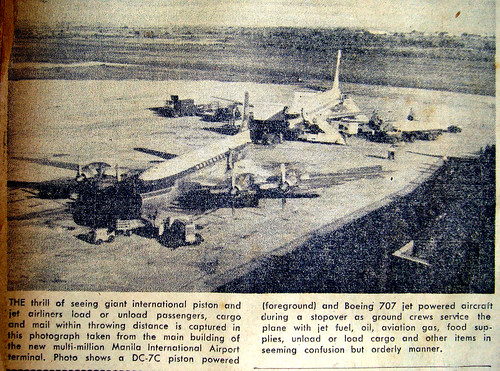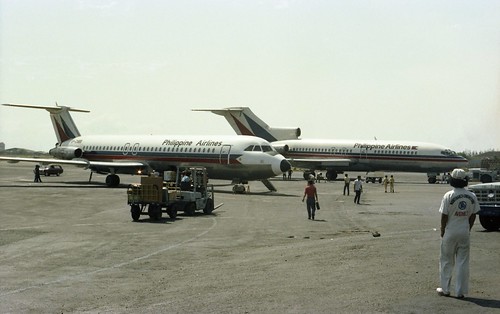 Seair on the lookout for strategic partners Business Mirror
Seair on the lookout for strategic partners Business Mirror
by Ma. Stella F. ArnaldoLEISURE carrier
Southeast Asian Airlines Inc. (Seair) is seeking strategic partners to help push the carrier’s expansion, according to an airline official.
This developed as the carrier recorded a drop in the number of passengers last year, owing to stiffer competition in the Caticlan (Boracay) route.
Latest data from Seair showed that from January to November 2008, the airline carried 211,366 passengers, down 11.5 percent from the 238,804 recorded in the same period in 2007.
Avelino Zapanta, president of Seair, told the BusinessMirror the entry of major carriers Philippine Airlines and Cebu Pacific into the Caticlan market pulled away some passengers from Seair. “About 80 percent of our operations was in Caticlan, and that was where the two airlines entered carrying so much capacity. So they were able to capture some of our market.” Caticlan in Aklan, the gateway to the resort island of Boracay, had long been dominated by Seair and the former Asian Spirit (now Zest Airways).
Despite the intense rivalry in the local airline business, Nikos Gitsis, cofounder of Seair, said with its congressional franchise, the carrier hopes to “further strengthen and grow another 14 plus years by continuing innovative development in aviation and tourism to help push the economic growth of the Philippines.”
On December 27, 2008 the airline finally secured its congressional franchise to operate domestic and international routes from its base in Clarkfield, Pampanga.
Gabriel Claudio, presidential political adviser and head of the presidential legislative liaison office in Malacañang, said the congressional franchise, as embodied in Republic Act 9517, “lapsed into law on December 27 [2008.] By practice, franchise bills are just allowed to lapse into law.”
Reacting to the news, Gitsis said: “It [congressional franchise] is a great accomplishment of Mr. [Avelino] Zapanta and the management of Seair at the end of a very challenging year.” Gitsis and pilot Iren Dornier—grandson of Claude Dornier, the famous engineer and pioneering designer of military aircraft for Germany’s Luftwaffe in World War II—own 40 percent of Seair, while the rest of the shares are held by a group of Filipinos led by marketing specialist Tomas Lopez Jr.
Zapanta added that Seair is anticipating growth in its passenger traffic this year because of the expansion in its routes and the arrival of its two brand new Airbus A320-200s leased from Tiger Airways, a budget carrier based in Singapore. “The arrival of the A320s will boost capacity offering and the number of passengers carried.”
The two A320s, scheduled to arrive on March 1, are both 180-seater planes. On November 28, the airline started flying to Kota Kinabalu. In April 2009, it will begin its runs to Singapore and Macau; in August 2009, to Bangkok and Hong Kong, as well as Cebu and Davao; and in September 2009, possibly Incheon (in South Korea), Kuala Lumpur and Kaohsiung (in China). All new flights will be out of the Diosdado Macapagal International Airport in Clark, Pampanga, the carrier’s base of operations.
Under the terms of its congressional franchise and in accordance with provisions in the Philippine Constitution on public utilities, Seair is mandated to offer at least 30 percent of its outstanding capital stock to the public, “within five years from commencement of its operations.”
Asked whether the airline was confident it could pursue the initial public offering of its shares, Gitsis said: “Right now, no airline has been able to go public due to the extraordinary circumstances airlines have faced in the past two years, and the volatility in the markets exasperate the situation further. However, that said, we would be open to exploring the possibilities that could present themselves, including joint ventures or private placements as a first step.”
But he clarified that Seair owners are “not actively exploring a buyout, but are looking for strategic partners.”
Last year, Seair owners were being wooed by Filipino-Chinese businessman Alfredo M. Yao, after he bought out the owners of Asian Spirit. His plan was to merge both carriers, and use the management and marketing expertise of Seair’s key officers. The proposed buyout of Seair fell through in May, however, owing to a general disagreement on the price of the company shares.
Airline industry observers noted that with the congressional franchise, Seair can now command a higher price from any potential buyers.
Joaquin L. Po, an aviation industry analyst and former executive vice president of Asian Spirit, explained that a congressional franchise increases the share value of an airline among its potential buyers because technically, only public utilities with such a franchise are allowed to operate. “Licenses of public utilities without congressional franchises can just summarily canceled by the government. A congressional franchise affords an airline protection, and its license to operate can only be cancelled if it violates conditions of said franchise. So this gives a certain comfort level for any interested investors of that airline.”
Republic Act 9517, which grants Seair the “franchise to establish, operate and maintain domestic and international air transport services, with Clarkfield, Pampanga as its base,” was based on House Bill 3788 co-authored by Reps. Eleajandro Jesus Madrona, Ferjenel Biron, Teodoro L. Locsin Jr., et al, which was approved by the House of Representatives, and later, by the Senate.
The congressional franchise also gives the airline government tax incentives such as duty-free importation of capital equipment and income tax holidays. The congressional franchise has a term of 25 years. (With Mia Gonzalez)



















